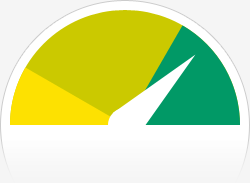During a period of reflection yesterday, I did a bit of brainstorming on my personal profile. It started as a resume-building exercise. What was on the surface of my mind came out rather easily. However, as is typical of these free form reflection techniques, my conscious mind started to probe deeper. Today, in going back through the reflections for this post, my notes pushed me to think even more deeply about what emerged and helped me draw new conclusions.
Profile of David D. Parker:
open-minded idealist who sees the bright side in all things
hard worker with 7 years experience in community relations and marketing
builder of agile social enterprises
googler of everything he doesn’t know
dreamer
advancer of civilization
lover of Bahá’u’lláh
wonderer
reader of books slowly
lover of gardening and fishing and generally all things green
fixer of things around the house
husband and spiritual companion of Layla
Moment of inspiration: “The true marriage of Baha’is is this, that husband and wife should be united both physically and spiritually, that they may ever improve the spiritual life of each other, and may enjoy everlasting unity throughout all the worlds of God.” –
‘Abdu’l-Baháone who enjoys:
to cross things off to-do lists
to track tasks on sticky notes on a wall
listening to podcasts social entrepreneurship, social innovation, business, society, community building
watching NCAA college football (especially for the few seconds they show of the marching band’s half-time show)
listening to drum corps music
natural beauty in the world
one who is interested in:
building a culture of learning
social entrepreneurship
social innovation
agile methods
complexity science
corporate social responsibility
social enterprise
social media
social finance
social economy
In truth, these are not separate things. They are all One.
one who values:
unity
justice
truthfulness
being of service
contributing to the world
making a difference in the lives of others
one who worries about:
money…
hmmm… this is actually indicative of another thing I value. I value financial sustainability. I don’t need much. I want “to be satisfied with whatsoever Thou hast ordained for me.” (Bahá’í Prayer)
But still I need means to achieve my purpose in life.
If I didn’t have to worry about money, what would I do? I would work on OpenAgile because it is inspiring. It does exactly for me what it is intended to do for others. The purpose of OpenAgile is “To create an environment in which people are free to express their true nature and capacities to contribute to the betterment of their organization.” Anytime I am applying OpenAgile to my work in an organization, I feel like I am doing this. When I’m applying OpenAgile, I am capable of putting all of my energy into whatever I’m doing. I don’t get distracted.
Some things that I’ve done where I applied OpenAgile and felt a strong sense of accomplishment: fixing my deck, making a nice garden, fixing up my house. These are all tangible things that are the result of focused effort. And all of these grew in quality over successive iterations.
Now I’m reflecting on something else: What does this tell me about my purpose in life (at least my current understanding of it)?
I believe that to be of service to others, I must help them find a new approach to getting things done which allows them to align their inner and outer character. To break down the false dichotomy in our society that says we have to be either a spiritual or a material being. We can be both, and we can have purpose and meaning in our work environment. OpenAgile has shown me that, and I want to show other people OpenAgile.


